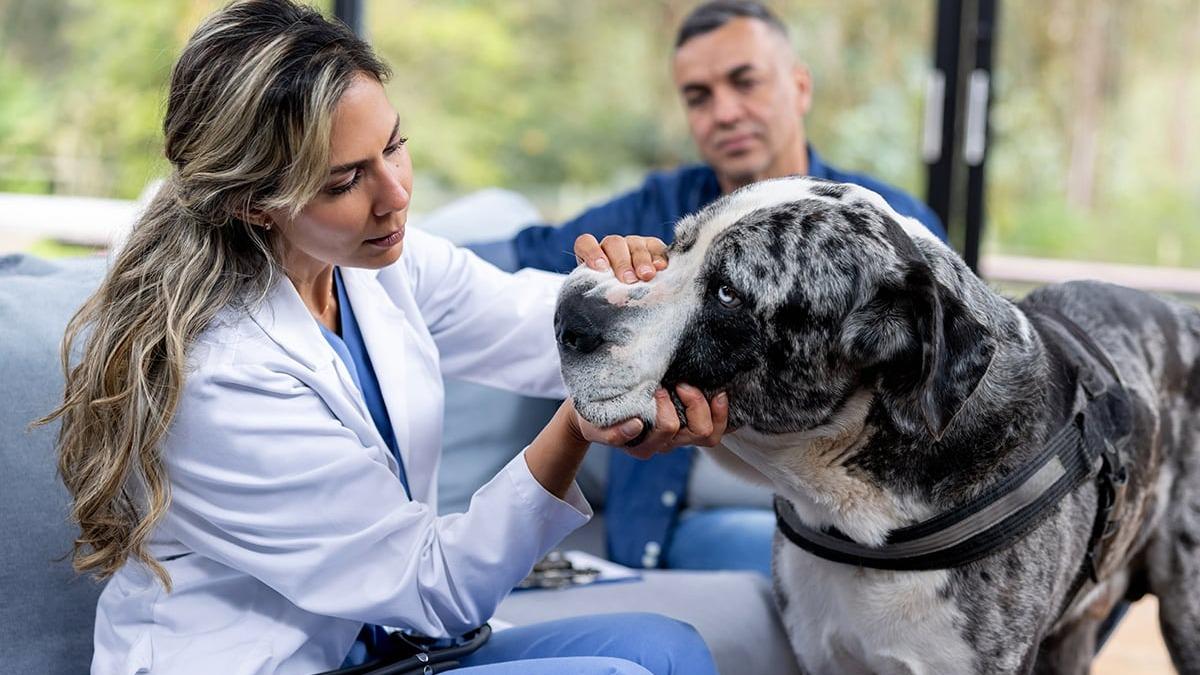Parasites are a common problem that many pet parents face. These pesky creatures can cause a host of health issues for our beloved furry friends, including itching, discomfort, and even serious illnesses. In this blog post, we will explore some of the most common parasites that can affect pets and discuss the various prevention and treatment options available to keep our pets healthy and parasite-free. Whether you have a dog, cat, or any other pet, this guide will provide valuable information to help you protect your furry companion.
Types of Parasites That are Common in Pets
Fleas, ticks, and worms are some of the most common parasites that can affect pets. It's important for pet parents to be aware of these parasites and take preventative measures to keep their pets safe and healthy.
1. Fleas
Fleas are small, wingless insects that can cause intense itching and discomfort for pets. They are often found under the fur close to the skin. In dogs, fleas particularly affect the base of the tail and hind end. However, fastidious pets may remove fleas while grooming, leading pet parents to mistakenly believe fleas are not present. Flea bites can cause pets to scratch excessively, leading to skin irritation and potential infections.
These parasites can also transmit tapeworms and diseases such as flea-borne typhus and Bartonella infection. In severe infestations, pets can become anemic from the excessive blood loss caused by fleas feeding on them. Additionally, fleas can also cause flea allergy dermatitis, a common allergic reaction in pets, which can result in hair loss, skin infections, and a weakened immune system.
2. Ticks
Ticks are external parasites that attach themselves to the skin of pets and feed on their blood.
These parasites can pose a range of risks and problems for pets including irritation, inflammation, and even infection at the site of attachment. In addition, ticks are also known to transmit diseases such as Lyme disease, Ehrlichiosis, Anaplasmosis, Hepatozoonosis, Rocky Mountain Spotted Fever, and Babesiosis, which can cause serious health issues in pets. In some cases, ticks can be quite difficult to remove, and their mouthparts can break off and remain embedded in the skin, leading to further complications.
3. Intestinal Worms
There are several types of worms that can live in the intestines of pets. They can cause a range of health issues, including weight loss, diarrhea, and even organ damage if left untreated. Intestinal worms can also interfere with the absorption of nutrients, leading to malnutrition. In severe cases, worm infestations can be life-threatening, especially in puppies and kittens. Some types of worms are passed from mother to offspring in utero, making deworming important from the start.
How to Prevent Parasites in Pets
1. Preventative Parasiticides
Preventive medications play a crucial role in avoiding parasite infestations in pets to begin with. Often, infestations go unnoticed until they reach an alarming threshold. Speak with your veterinarian about the importance of keeping your pet on year-round preventatives for internal and external parasites.
Flea and tick preventive medications come in many formulations including chews, tablets, topicals, and collars. Some products are designed to repel and some will kill parasites before they can cause harm to our pets. Speak with your veterinarian to determine which formulations are most appropriate for your pet for comprehensive prevention.
2. Regular Grooming and Inspection
By regularly grooming and inspecting your pets, you can detect signs of infestation early on and take immediate action. Grooming allows you to check for fleas, ticks, or any other external parasites, while inspection helps identify any changes in a pet's skin or coat that may indicate an internal parasite infestation.
Additionally, grooming also helps maintain a clean and healthy coat, reducing the chances of parasites finding a suitable environment to thrive.
3. Proper Hygiene and Cleanliness
Proper hygiene and cleanliness are essential for preventing parasite infestations in pets. By keeping our pets and their living environment clean, we can minimize the risk of parasites finding a suitable environment to thrive. Regularly cleaning our pet's bedding, grooming tools, and living areas helps to eliminate any potential sources of infestation.
Moreover, practicing good hygiene, such as washing our hands after handling our pets and disposing of their waste properly, can also reduce the likelihood of parasite transmission. By incorporating these habits into our pet care routine, we can effectively protect our furry companions from parasite infestations and ensure their health and wellbeing.
4. Avoiding Exposure to Infested Areas
Avoiding exposure to infested areas is another important way to prevent parasites in pets. By keeping our pets away from areas known to be infested with parasites, we can reduce their risk of encountering these harmful organisms. This means avoiding places like heavily wooded areas or tall grass where ticks are commonly found, as well as areas where other animals with parasites may frequent. By being proactive and mindful of our pet's environment, we can help ensure their safety and prevent potential parasite infestations.
Treatment Options for Parasites in Pets
1. Preventative Treatments
In some cases, the formulations used as preventatives can also act to treat infestations. However, it is important to consult a veterinarian to properly diagnose the parasite, ensure all life-stages are targeted by the use of preventatives, and to learn what frequency and dose to use for treatment. Not all preventatives can be used to address infections, but your veterinarian will give you further guidance.
2. Prescription Medication
If your pet’s infestation is not able to be cleared up using preventatives, your vet will prescribe the appropriate medications. These prescriptions are typically more concentrated and stronger than preventatives and over-the-counter treatments. They may come in several different formulations, depending on the type of parasite being treated. It is important to follow the veterinarian's dosage guidelines and follow-up instructions when administering prescription medications to ensure the safety and effectiveness of the treatment against the entire life cycle of the parasite in question.
2. Environmental Control
While treating your pet for parasites, it is important to also treat the environment. Many parasites live part of their life cycle off of pets, either in the environment or in another animal that is acting as an intermediate host. Additionally, other pets in the home should be treated at the same time to make sure they do not act as a reservoir for re-infestation.
Conclusion
In conclusion, preventing and treating parasites in pets is essential for their overall health and well-being. Pet parents should prioritize regular preventive measures such as proper hygiene, regular grooming, and environmental control. Consult your veterinarian to diagnose and treat parasites in your pet.
By working closely together veterinarians and pet parents can ensure their beloved pets are protected from parasites and are able to maintain a happy and healthy life.
–By Dr. Karen Whala, Co-founder of CodaPet
About the Author
Dr. Whala's expertise and compassion have helped countless families navigate the difficult process of saying goodbye to their beloved pets. Her commitment to providing peaceful and dignified end-of-life care has made a lasting impact on the lives of many pet owners.

Dr. Karen Whala, founder of Peaceful Passing (2018), is certified in in-home euthanasia, Fear Free, and AAHA Accredited End-of-Life. Passionate about helping veterinarians offer IHE, she co-founded CodaPet to expand nationally.












